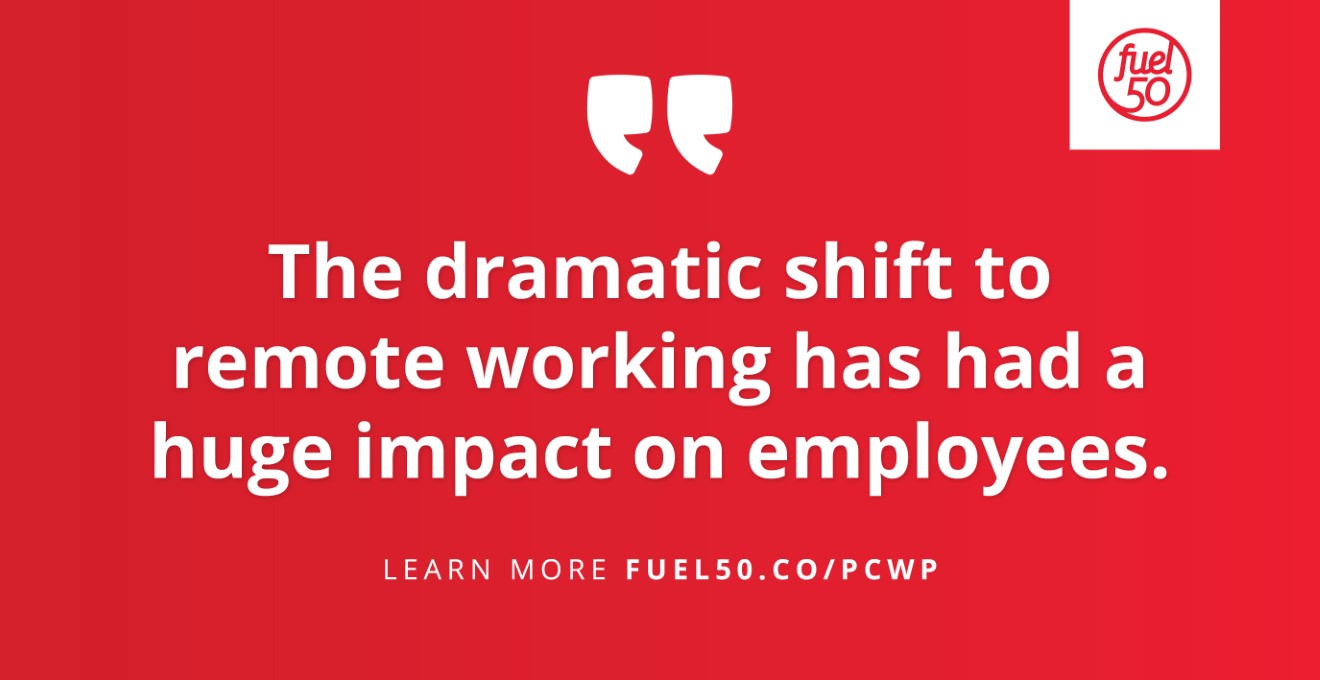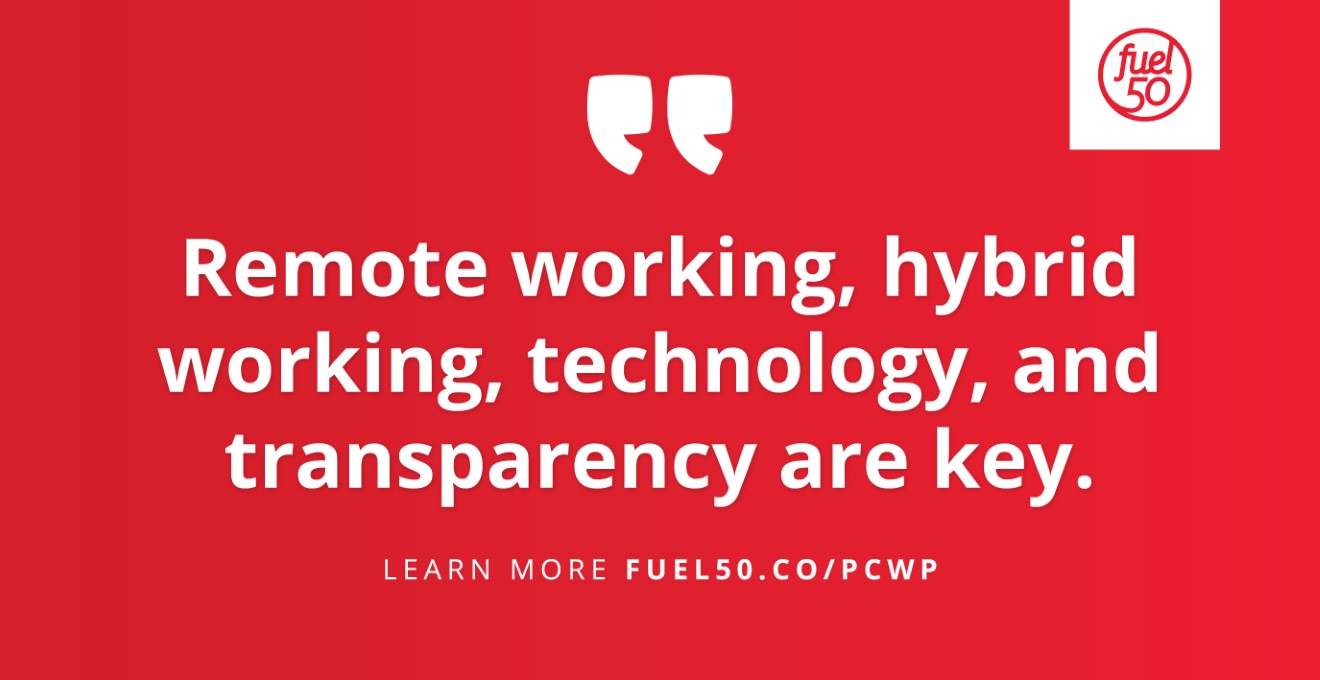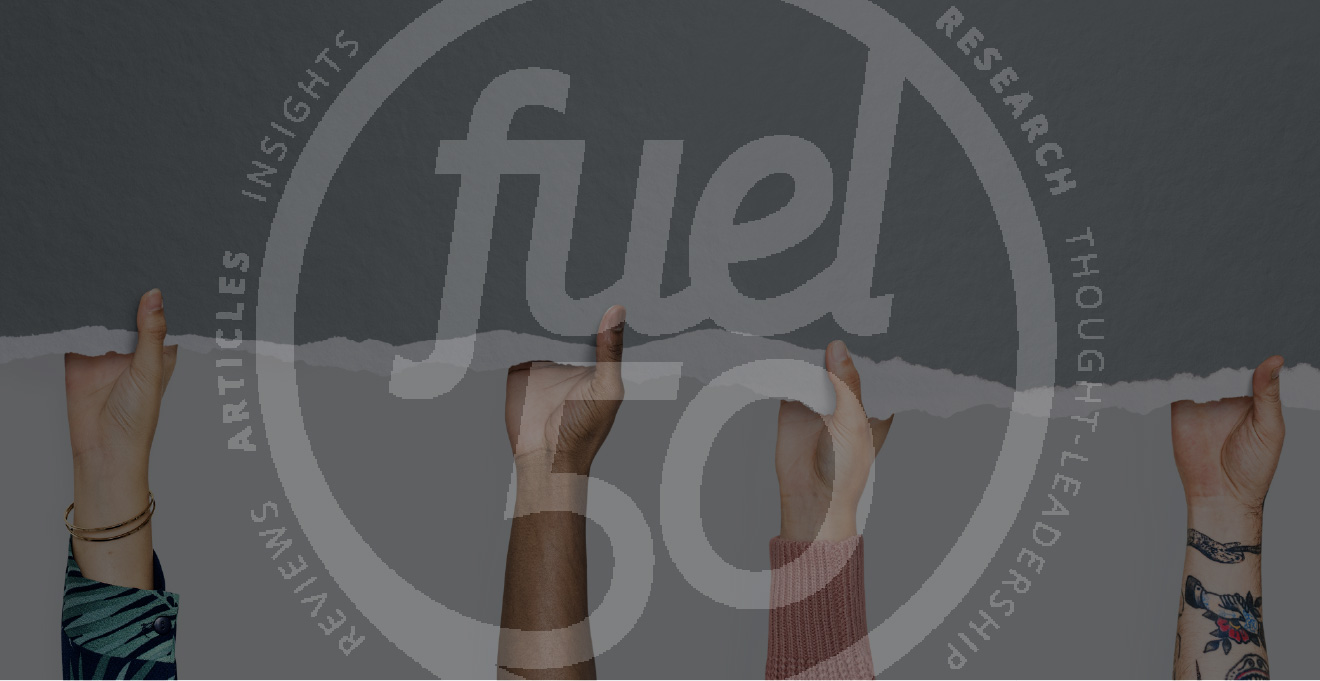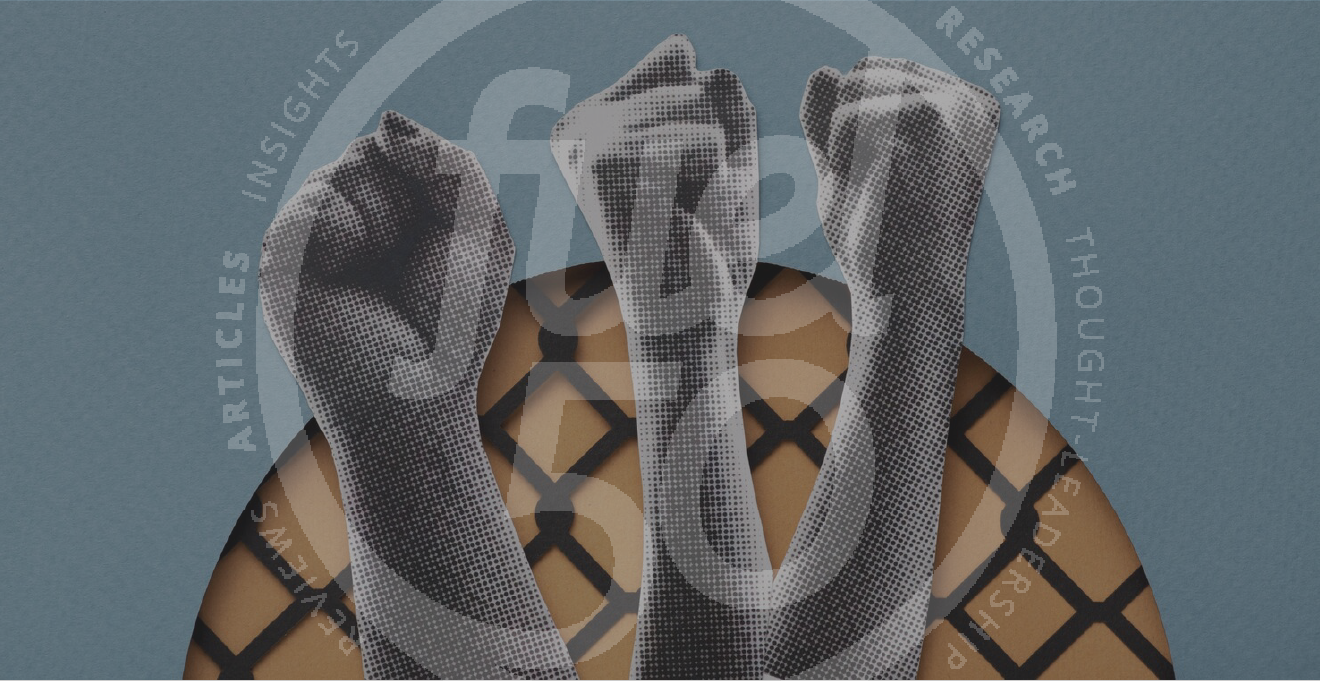Pre-Covid-19, everywhere we looked there were articles about the “Future of Work” and the impending Fourth Industrial Revolution. Then, unexpectedly, a global pandemic hit and forced a massive shift in all aspects of life. As McKinsey states in their article “Reliably connecting the workforce of the future (which is now)”1, the pandemic has amplified existing trends and challenges, affecting the way employees and companies function.
Many of us have been left pondering: What is next? And what will the Post-Covid World of Work look like? Will we continue with remote working? Will the need for physical contact continue to decline?
Key changes in workplace characteristics – shifting to remote and hybrid work
The Post-Covid Workplace looks very different from what we knew before. Office spaces have become deserted, traffic has declined, and working remotely has become the new norm.
Before the pandemic, some organizations were making bold steps to ensure work was more accessible to remote employees. However, the onset of the pandemic forced this on all organizations because the only way they could keep operating was to embrace working-from-home.1 As the world is slowly opening back up, it is encouraging to see so many organizations committing to embedding hybrid working practices. In fact, according to Fuel50’s 2021 Global Talent Mobility Best Practice Research, 76% of HR leaders reported they will be embedding hybrid working practices. But what does this mean for organizations? What are some of the benefits and drawbacks that need to be considered?
What are the benefits of increased remote working?
The dramatic shift to remote working has had a huge impact on employees, both positive and negative. Some of the benefits2 were:
- Better work-life balance – working from home allows employees to start and end their day as they choose, as long as work is complete. Research also shows that improved work-life balance leads to increased productivity, fewer instances of sickness and absenteeism, a happier, less stressed workforce, improvements in mental health and well-being, and a more engaged workforce.3 FlexJobs’ 2020 survey, which surveyed more than 4,000 people who were working remotely during the pandemic, found that remote working gives employees the time and environment to make healthier choices.4
- Less commute stress – more than 30 minutes of daily one-way commuting is associated with increased stress and anxiety. Research also shows that commuting 10 miles to work can impact health issues such as higher cholesterol, elevated blood sugar, and increased risk of depression.
- Location Independence – remote working practices create opportunities for broader job access that are not limited by geographic location. Being a digital nomad provides easier access to work for people like military spouses who move a lot. It also avoids high living costs if people are not required to live in a certain area.

- Improved inclusivity – remote working enables companies to embrace diversity and inclusion by widening the hiring pool and not limiting it to a specific location.
- Money savings – this is not only applicable to the employee, who saves money on gas, car maintenance, transportation, parking fees, clothes, lunches, etc., but it is also appliable to employers who save on overheads like real estate, transit subsidies, and continuity of operations.
- Positive Environmental Impacts – data showed that at the peak of the pandemic when fewer people were commuting and working from office spaces, there was a significant reduction in greenhouse gas emissions, a reduction of paper and plastic usage, reduced power consumption, and improved air quality.5
- Increased productivity and performance – FlexJobs’ 2020 survey found that employees who thought they were more productive working from home, were. Respondents said this was because of fewer interruptions, fewer office politics, and quieter work environments. Similarly, according to Fuel50’s 2021 Global Talent Mobility Best Practice Research, 38% of HR leaders stated levels of productivity increased because of remote working.
What are the challenges faced by organizations due to remote working?
A remote workforce brings benefits to both individuals and organizations, but it also has its challenges.
- Not everyone can work remotely – In BBC’s article titled “Coronavirus: How the world of work may change forever”6, it states that 60% of the American workforce won’t be able to work from home. These workers are concentrated in the industries of transportation, food service, cleaning and maintenance, retail, and personal care industries. With these industries already having restricted and higher-risk working environments, it is important to acknowledge that this large segment of workers cannot access the positive benefits associated with remote working.
- Reduced employee wellbeing – The workplace is essentially a social environment, somewhere for people to connect. Human beings are social creatures and, without connecting and interacting with others, we increase the risk of higher stress and anxiety levels.7 Bryan Robins, Ph.D.8 refers to a combined study conducted by SAP, Qualtrics, and Mind Share Partners where they found that the pandemic had a particularly negative impact on mental health around the world, with 40% of respondents reporting declines in their mental health. Reopening workplaces gives employees access to human connection, supporting improved mental health.
- The loss of face-to-face meetings – Many employees across the globe have ‘digital meeting’ fatigue and are looking forward to traditional face-to-face meetings resuming.
- Reduced collaboration – Fuel50’s 2021 Global Talent Mobility Best Practice Research found that remote working reduced levels of collaboration for over a third of respondents. Employees were left feeling more detached with their working practices becoming more independent. Reducing levels of collaboration across an organization has several detrimental knock-on effects including reduced innovation, employee satisfaction, customer satisfaction, cross-functional relationships, and employee skill-building.

What can organizations do to thrive in a world of hybrid work?
Indranil Roy, Executive Director, Human Capital Practice from Deloitte Consulting, said post-covid employees have an overwhelming preference to continue flexible working practices. Organizations need to rethink their working practices, opting to develop a sustainable “virtual first” approach. This entails:
- Creating distributed workplaces – this is a workplace that allows people to work with ease in homes, offices, and satellite offices. With these options, employees are given the choice to work remotely or face-to-face depending on the nature of their work and the team’s preferences.
- How to make this a reality: Put technology in place to enable multiple modes of working, including systems to ensure data can be saved on the cloud. Tailor access and security for the different modes of work and implement applications that allow for seamless virtual collaboration.
- Creating virtually ready managers – this is providing managers the training and support to manage, coach, collaborate, evaluate performance, and motivate their teams remotely.
- How to make this a reality: Deliver learning and training on effective remote leadership, virtual meeting facilitation, how to create an inclusive environment, listen to employees, and cultivate a sense of belonging.
- Creating a culture focused on trust and belonging – through forming interpersonal bonds with intent and care.
- How to make this a reality: Joan Goodwin proposes tactics like scheduling “virtual lunches” where team members use videoconferencing technology to have a work-free lunch, video-based workouts, coffee chats, and happy hours which give team members glimpses into the lives of teammates in new and personal ways.9
Stewart Butterfield, Slack’s CEO and co-founder, sees the shift to remote working as an opportunity to break free from a prohibitive culture of 9-to-5 office-centric work. He believes organizations that are shifting to a more hybrid approach provide the opportunity to retain best practices from old ways of working, such as social interaction and the ability to create a sense of belonging, while simultaneously eliminating bad habits and inefficiencies10 from old ways of working.
Ultimately, when considering all the above, it seems the Post-Covid Workplace is an alternative world of work where remote working, hybrid working, technology, and transparency are key.
1. ‘Reliably connecting the workforce of the future (which is now)’. Ferry Grijpink, Kasia Jodlowska, Mark Patel and Rutger Vrijen, April 14, 2021 [online]. https://www.mckinsey.com/industries/technology-media-and-telecommunications/our-insights/reliably-connecting-the-workforce-of-the-future-which-is-now. Accessed: 30th May 2021.
2. ‘The Benefits of Working From Home: Why the Pandemic isn’t the Only Reason to Work Remotely’. Emily Courtney, January 4, 2021 [online]. https://www.flexjobs.com/blog/post/benefits-of-remote-work/. Accessed: 31st May 2021.
3. ‘Promote healthy work-life balance in your business”. No date [online]. https://www.nibusinessinfo.co.uk/content/advantages-improved-work-life-balance . Accessed: 3rd June 2021.
4. ‘FlexJobs Survey: Productivity, Work-Life Balance Improves During Pandemic.’ Rachel Pelta, September 21, 2020 [online]. https://www.flexjobs.com/blog/post/survey-productivity-balance-improve-during-pandemic-remote-work/. Accessed: 3rd June 2021.
5. ‘7 Positive Environmental Benefits of Remote Work’. Eric Shad, October 27, 2020 [online]. https://www.virtualvocations.com/blog/telecommuting-survival/8-environmental-benefits-of-remote-work/ . Accessed: 3rd June 2021.
6. ‘Coronavirus: How the world of work may change forever’. Anonymous, no date. https://www.bbc.com/worklife/article/20201023-coronavirus-how-will-the-pandemic-change-the-way-we-work . Accessed: 31st May 2021.
7. ‘How to keep from being isolated during the Coronavirus Pandemic – While still keeping your distance.’ Elizabeth Fernandez, March 19, 2020 [online]. https://www.forbes.com/sites/fernandezelizabeth/2020/03/19/humans-are-social-creatures-how-can-we-make-the-most-of-isolation/?sh=13da701b624d. Accessed: 31st May 2021.
8. ‘Is working remote a blessing or burden? Weighing the pros and cons. Bryan Robinson, Ph.D., June 19, 2020 [online]. https://www.forbes.com/sites/bryanrobinson/2020/06/19/is-working-remote-a-blessing-or-burden-weighing-the-pros-and-cons/?sh=5b88bc1540a9. Accessed: 1st June 2021.
9. ‘Navigating the New Normal – How organizations can manage post-disruption performance and engagement’. Joan Goodwin, May 4, 2021 [online]. https://www2.deloitte.com/us/en/blog/human-capital-blog/2021/navigating-new-normal.html. Accessed: 3 June 2021.
10. ‘Coronavirus: How the world of work may change forever’. Anonymous, no date. https://www.bbc.com/worklife/article/20201023-coronavirus-how-will-the-pandemic-change-the-way-we-work. Accessed: 31st May 2021.
Written by Fuel50’s Workforce Architecture team
Contributors: Elizma Meyer and Fahrenaaz Mahed
Fuel50’s dedicated team of Workforce Architects and Industrial and Organizational Psychologists feed the Fuel50 Talent Ontology, train our ethical AI with Diversity, Equity, and Inclusion design principles at heart, and support best-in-class organizations using Fuel50 to transform and future-proof their talent strategy and workforce architecture.






